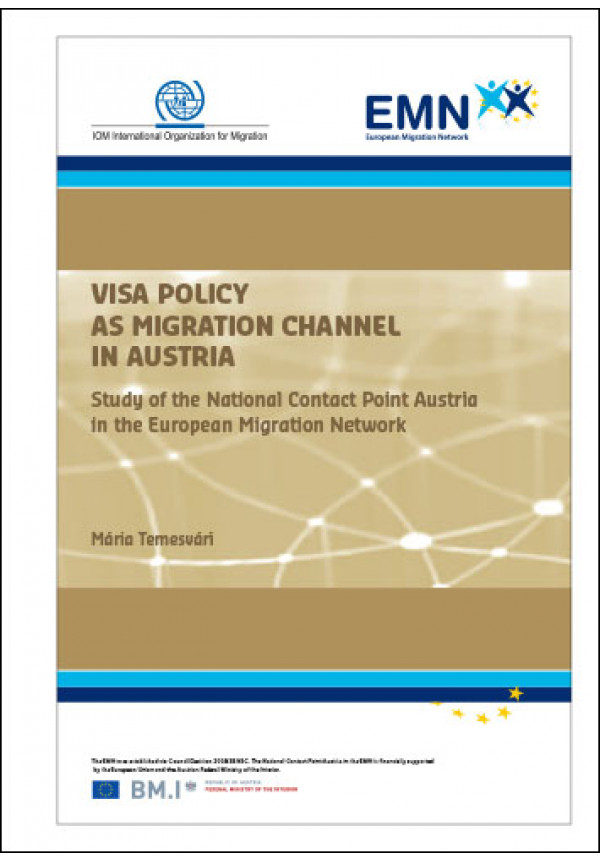
Original Language
English
Number of Pages
30
Reference Number
ENG0678
Year of Publication
2012
Visa Policy as Migration Channel in Austria
The study analyses the effects of visa policy on the management of migration, both in terms of facilitating legal migration and of preventing irregular migration in Austria. Visa policy is mainly an EU competence; the focus of this study lies on national visa policies regarding long-stay visas.
Read More
- EMN INFORMATION
- EXECUTIVE SUMMARY
- 1. INTRODUCTION: PURPOSE AND METHODOLOGY
- 1.1 Purpose
- 1.2 Methodology
- 1.3 Definitions
- 2. POLICY AND LEGAL FRAMEWORK FOR THE GRANTING OF VISA IN AUSTRIA
- 2.1 National policy and legislative framework
- 2.1.1 Policy framework
- 2.1.2 Legislative framework
- 2.2 Agreements with third countries
- 2.2.1 Visa facilitation agreements and other bilateral/multilateral agreements
- 2.3 Recent changes to visa policy and legislation within context of a common EU dimension
- 2.3.1 Implementation of the Visa Code and the VIS
- 2.3.2 Influence of EU Directives on different forms of legal migration
- 2.4 Recent changes to visa policy and legislation relating to national visas
- 2.1 National policy and legislative framework
- 3. PRACTICAL IMPLEMENTATION AND ORGANISATION
- 3.1 General procedure followed in the stages of the visa procedure
- 3.1.1 Application stage
- 3.1.2 Examination stage
- 3.1.3 Entry, Stay and Exit
- 3.2 Links between visa policy and legal migration: applicability of different scenarios for the visa procedure
- 3.3 Visa procedures for the purpose of preventing irregular migration
- 3.3.1 Prevention of irregular migration during visa issuing and monitoring process
- 3.3.2 Prevention of irregular migration through other measures during visa issuing
- 3.1 General procedure followed in the stages of the visa procedure
- 4. CO-OPERATION WITH THIRD COUNTRIES: INDIA & NIGERIA
- 4.1 INDIA
- 4.2 NIGERIA
- 5. EFFECTS OF EU POLICY AND LEGISLATION
- 6. DATA AND EMPIRICAL EVIDENCE ON VISAS ISSUED BY AND IMMIGRATION TO AUSTRIA
- 7. CONCLUSIONS
- ANNEX 1
- ANNEX 2